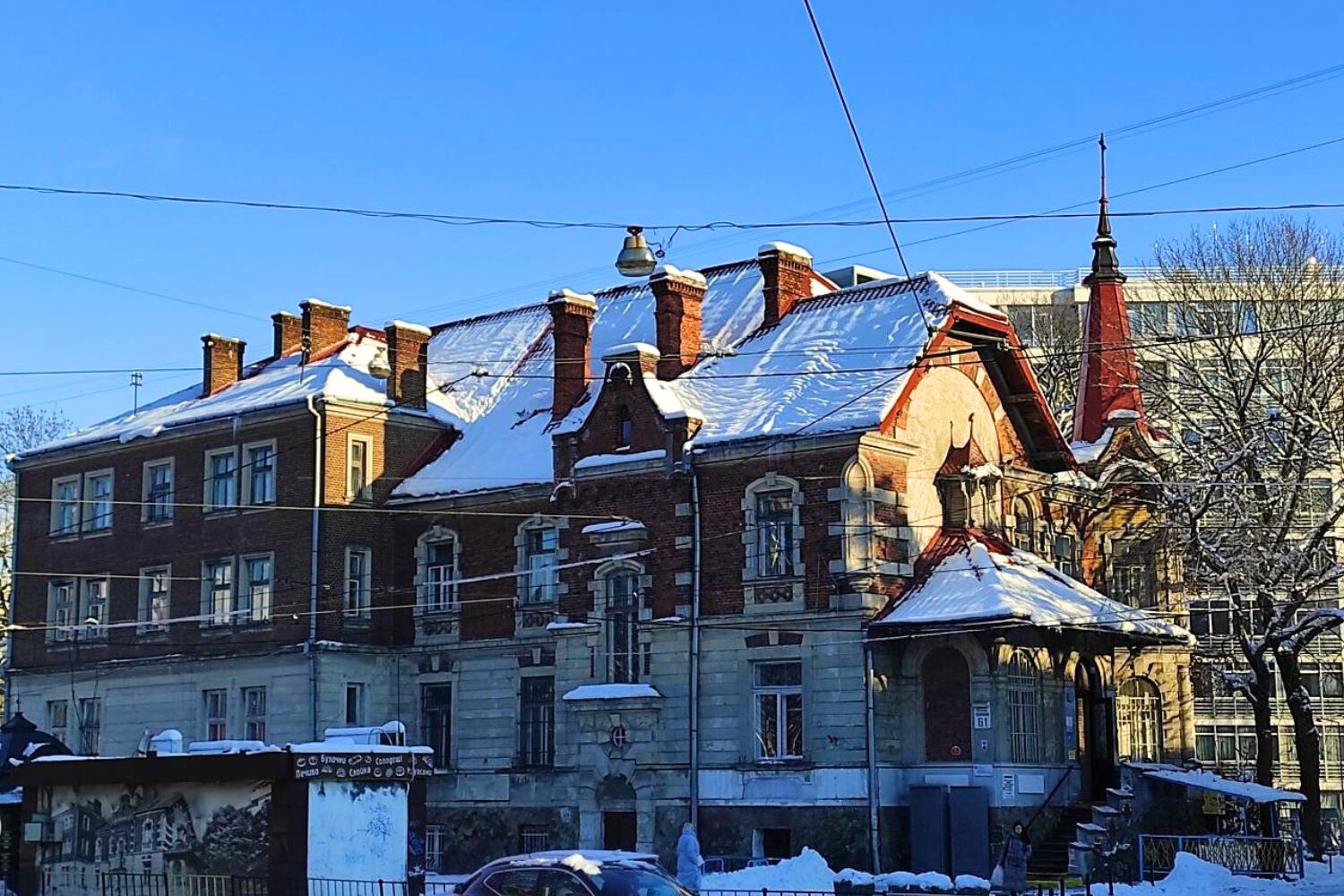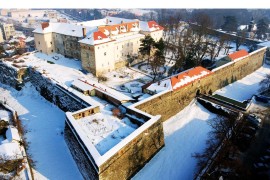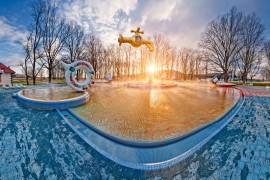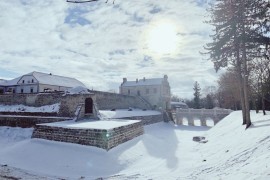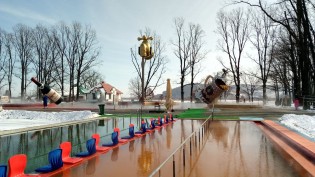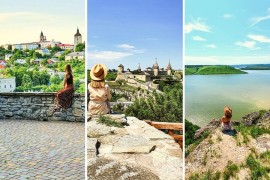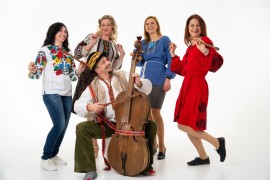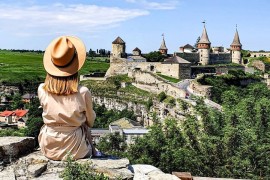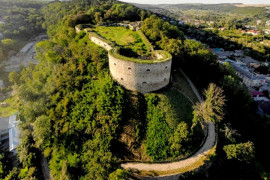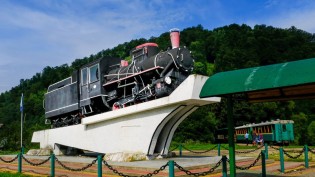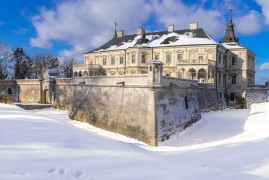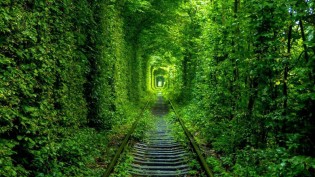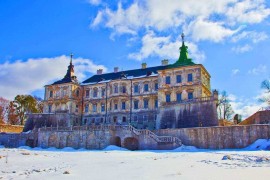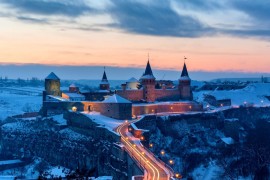Palace of the King of Plaster
The Palace of the Gypsum King - this charming palace was built for the wife of the Gypsum King Joseph Franz Josefa in 1893. It is one of the most luxurious villas in Lviv, built in the Neo-Baroque style by Jan Perosz. Given the wealth of the owner, it is believed that the building hid many treasures that disappeared in an unknown direction after nationalisation. Today, this imposing mansion is home to the regional medical and physical therapy dispensary.
Villa ‘Sonyachna’
The villa was built for the first director of the Lviv Opera, Ludwig Heller, in 1905. The house was built in an interesting Zakopane style. It is brick, galvanised, and has wooden elements. Unfortunately, it is now an apartment building, which is quite abandoned.
Villa of Vincent Ravsky
The villa was built by architect Wincent Rawski for his family in 1896. He also designed a stone-fenced garden in front of his house. The building has undergone numerous reconstructions, in the 1960s it was an adult clinic, and now it houses the 5th children's clinic.
Villa of Ludovic Wierzbicki
The building was designed by Alfred Zacharewicz in 1904-1905 for the family of the head of the railway administration, Ludwik Wierzbicki. The architecture of the villa has features of the so-called Zakopane style, which was popular in the early twentieth century, combined with the formative means of Secession. Carved wooden details are the dominant feature of the house's decor. The sharp silhouettes of the outbuildings and significant differences in the height of the cornices add expression. The garden and flower beds around the estate are a long-standing hallmark of the New World.
Villa Yulietka
The former Zakharevych Villa Yulietka was built in 1891-1893 by architect Julian Zakharevych in the style of a romanticising variant of late historicism/early Secession. The building is located in a picturesque area on the western outskirts of the city, in a park zone. The interior has wooden floors. The window openings are decorated with stained glass. After the Second World War, the villa was a kindergarten, and now it is privately owned.
Sosnowski Palace
The Sosnowski Palace is known among Lviv residents as a fortress house. In 1901, it was built by architect Yurii Sosnovskyi for his own use. He was one of the innovators in the profession, applying the latest construction technologies in his projects. When he started planning his own house, Sosnovskyi decided to create an original building that could impress the townspeople with its unusual architecture. The addition of a corner tower to the main building gave the palace the appearance of a knight's castle and still gives passers-by the illusion of being transported back to medieval times. Experts find elements typical of the Moorish style in the style of its construction.
Villa on the ‘Cross’
The villa was designed in the 1890s by famous Lviv architects Julian Zakharevych and Ivan Levynskyi. It was built by Levynskyi's firm for the rector of the Polytechnic, Placid Dziwiński. The mysterious villa on the ‘Cross’ was built at the intersection of modern Chuprynky and Kyivska streets. For years, it was locked and gradually deteriorated. This beautiful but rather gloomy building, shrouded in sad legends, has always attracted the attention of Lviv residents, especially those from the Kastelivka neighbourhood. Today, this architectural gem is owned by the Taras Shevchenko Scientific Society.
Maslovsky Palace
The palace was purchased in 1872 by the publisher of the Przeglad newspaper, Ludwig Masłowski. At the request of the new owner, the villa was rebuilt in the Neo-Romanesque style in 1889-1900 by Polish architect Tadeusz Munnich. In Soviet times, the palace was turned into an apartment building.
Bavorowski Palace
The Bavorowski Palace is a former Seniavski arsenal (1635) that underwent a major reconstruction under the direction of Ignatius Hambes in 1830-1840, acquiring the features of classicism with its refined beauty. The exterior and interior of the building were filled with masterpieces of literature and painting (the highlight was the private collection of Viktor Bavorovsky, which was moved to these walls in 1877).
Sapih Palace
The Sapieha Palace in Lviv is the ancestral home of an ancient family of Lithuanian-Russian princes. The building was constructed in the French Baroque style of the 17th century, in 1868. Contemporaries called Adam Sapieha's palace a ‘magic box’ that cost almost as much as the magnificent Potocki Palace, located nearby. During the Second World War, the palace was heavily damaged by a bomb and partially dismantled. Only the front part of the palace remains, with its exquisite handmade stone carvings. It is now home to the Ukrainian Society for the Protection of Historical and Cultural Monuments, and school No. 9 was built on the site of the dismantled palace.
Lozynski Palace
The Lozynski Palace was built in 1873 as a palace-estate of Countess Isabella Diduszycka. The coat of arms of this famous family, in the form of a bas-relief, can still be seen on the facade of the building. Later, the palace became the property of the famous historian, collector, art historian, writer and journalist Władysław Lozynski (1843-1913), the owner of a huge collection of antiquities, weapons, and works of art. Currently, the building houses the Bohdan Voznytskyi Lviv National Gallery of Art.
Besiadecki Palace
The Besiadecki Palace is the only manor-type residence of the eighteenth century that has survived in Lviv. Despite the reconstructions, the monument has retained its original foundation. The palace changed owners very often, including counts: Bilski, Potocki, Komorowski.


